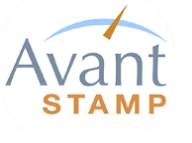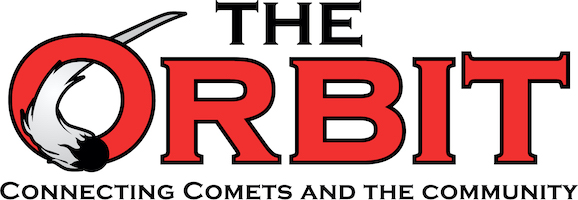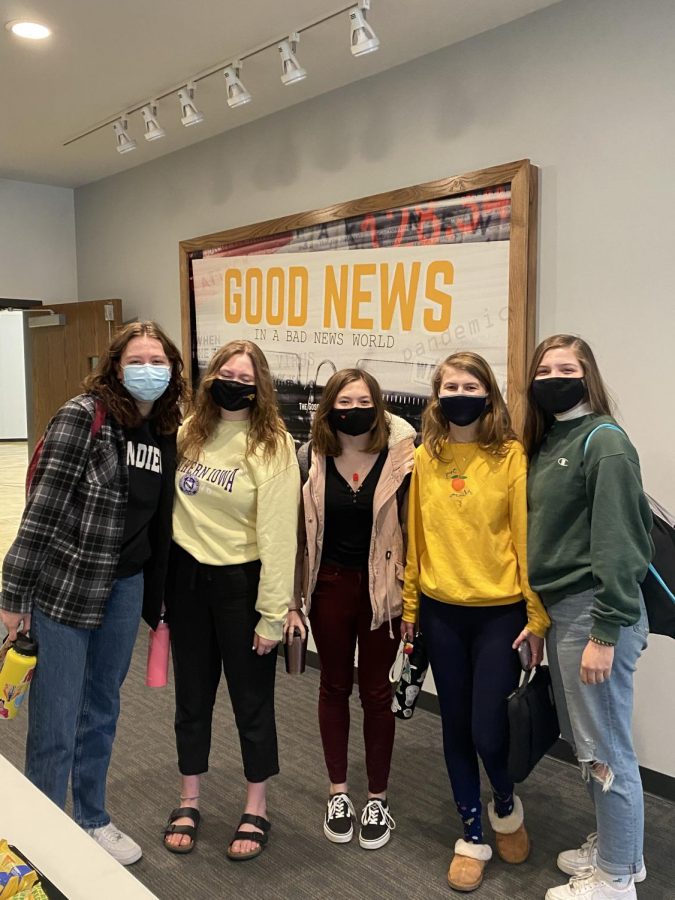Spanish Four Students Test Their Skills
Seniors wanting to earn the seal of biliteracy take the STAMP assessment
From left to right: seniors Sophie Vernon, Megan Theulen, Addi Thomas, Sydney Weers and Faith Sardou stand proud at their testing center at Lakeside Fellowship.
April 21, 2021
On Tuesday, April 13, several of the Spanish IV students drove to Polk City early in the morning to take the Avant STAMP Spanish Biliteracy test. The test, if passed, proves the student is proficient enough in Spanish to receive the Biliteracy Seal on their diploma. The students took their test at the new Luana Savings Bank and Lakeside Fellowship church in two separate groups.

There were four sections of the test. The reading and writing sections were held at Luana, and the listening and speaking sections were at Lakeside Fellowship. In order to receive the seal, students have to receive a five or higher score on all four assessments.
“The test was what I expected it to be, but it took a lot longer than I thought,” senior Mackenzie Blevins said. “We had taken a practice test during Spanish class a few months before and it was exactly like that.”
Many of the students prepared themselves for the test as they saw fit, while others did little and regretted it after the test was finished.
“I honestly didn’t do a lot to prepare for the test which, looking back, was not the best idea,” senior Sophie Vernon mentioned. “About 15 minutes before the test, I reviewed all of the verb tenses, and Megan Theulen and I listened to some good spanish music to get us hyped up and create some good Spanish vibes before the test.”
Half of the students took the reading and writing tests first, and the other half took the listening and speaking tests first. When asked which one of the four tests was the easiest, many of the seniors picked reading.
“The easiest for me was the reading,” senior Thomas Jones said. “I say that because it gave me lots of time to process the information, and it helps me to be able to see it.”
Senior Dylan Meiners also mentioned that the reading section was the easiest for him.
“I thought the reading category was the easiest, because it’s pretty [simple] just to pick out the phrase that gave the answer to the question, even when I couldn’t understand the whole thing.”
Though it was a nearly unanimous consensus that the reading section of the test was the easiest, the students had a few different thoughts on which test was the most difficult test.
“The hardest category was listening,” Blevins said. “Native speakers speak really fast, and it was hard to understand what they were saying [during the test].”
“The hardest [test] was probably the speaking,” Meiners said. “Being put on the spot made it kinda difficult, and the prompts were very specific which made it kinda tough too.”
Even though the test was difficult and lasted for nearly half of the school day, the students took the test for a variety of reasons.
“I decided to take the test because I am going to be minoring in Spanish next year in college,” said Vernon. “If I pass this test, it will act as a reminder that minoring in Spanish is a good idea.”
“I took the test because it would be nice to have on my transcript and it was free,” Jones said. “I figured I didn’t have anything to lose.”
The Spanish IV students who took the test got their results back on Mon., April 19. They worked hard and were very patient with the restrictions that COVID-19 entailed throughout the testing facilities.


